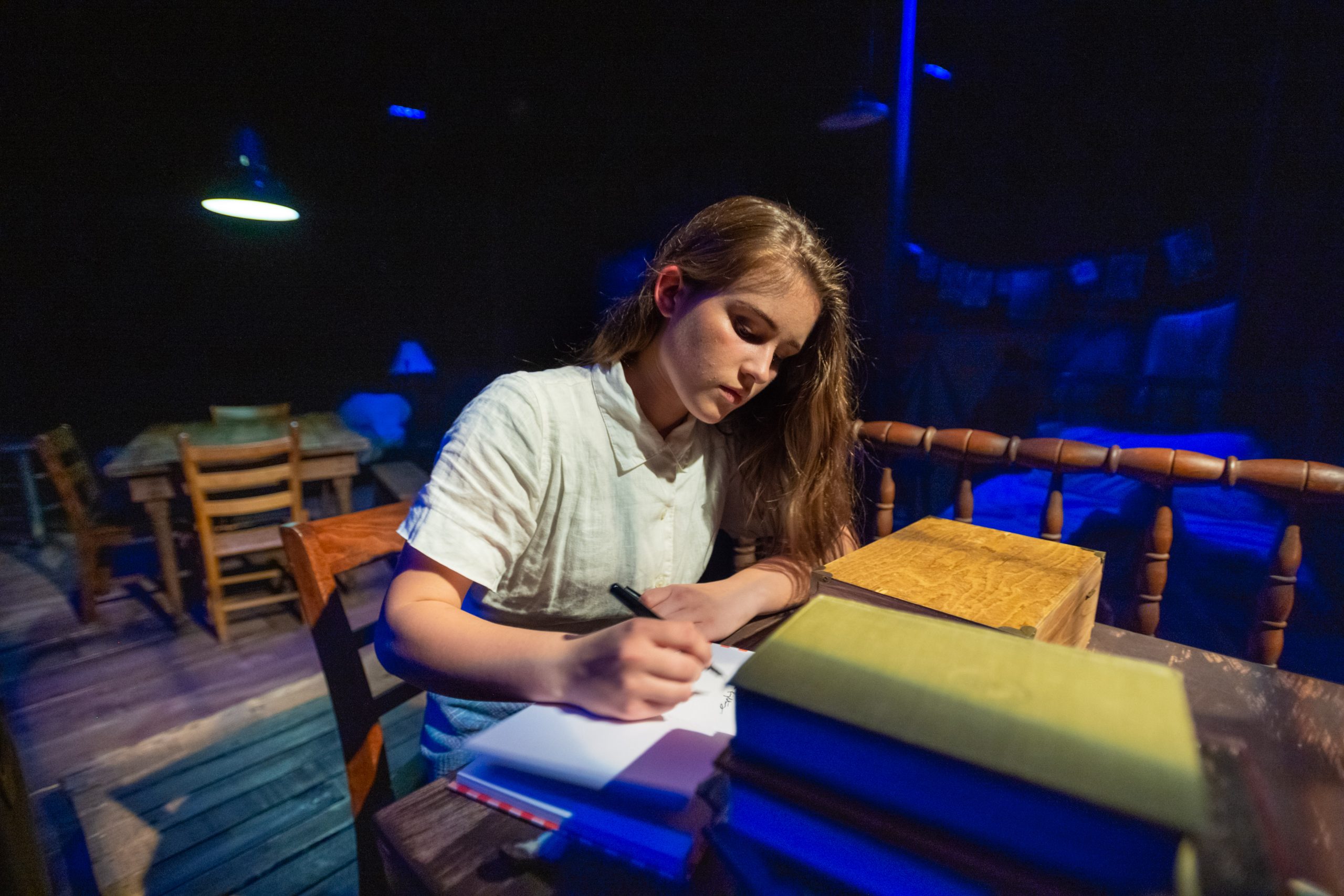
The Theology of Anne Frank
“I still believe, in spite of everything, that people are really good at heart” (Anne Frank).
Those words may seem unsurprising coming from a young, inexperienced, idealistic teenager. What’s surprising is that they come from a teenager forced to hide from those who eventually hunted her down and slaughtered her not for her crimes or for her faith, but for her race. It was Holland in the early 1940s. This was racism with a vengeance.
One of the perks of working at a liberal arts university with a vibrant arts program is regular access to first-rate musical and theatrical performances. One of those was a recent, superb, multi-night performance of “The Diary of Anne Frank.” Through depictions of fear, conceit, selfishness, and deceit pulse glimmers of humor, joy, sacrifice, and selflessness. How do we explain this mad mixture of the demonic and the Godlike that is humanity?
What makes the attentive observer blink in the sudden blindsiding light of Anne’s diagnosis of humanity is the surrounding darkness of depravity. The darkness of the context is apparent—both outside in the streets of Nazi-controlled Amsterdam and upstairs in the tiny attic room shared by eight people (and one cat) of three different families, both externally in the historical circumstances as well as internally in the hearts of the eight Jews fighting (sometimes with each other) for survival. It is the darkness of that context that makes the glimmers of light so startling when they come. Sometimes a light surprises, and never more than when it is darkest.
It’s tempting to suppose, of course, that the playwright was being ironic—juxtaposing Anne’s idealism over against all the obvious empirical evidence to the contrary surrounding her (and us). But that seems unlikely. Clearly, it is primarily the light, not the dark, that the playwright wanted to be sure the audience carried away, even from a play about the holocaust. (Not unlike the film La Vita é Bella; who would think Life is Beautiful was about the holocaust?) Hence the play’s defining line—“I still believe, in spite of everything, that people are really good at heart”—is not only spoken by Anne during the play, but also echoed as the unmistakable punctuation mark at the conclusion.
That’s not a note you expect to hear sounded at a historic Fundamentalist Christian institution where the creed affirms “the sins of mankind” and the need for Christ’s “power to save men from sin.” It sounds, well, unbiblical.
And yet, it got me to thinking.
Asked if people are “basically good or basically bad,” we respond, reflexively and orthodoxly, “Basically bad” (Rom 3:10, 23). True, if by “basically” we mean our inclinations and affections and posture toward God. But if by “basically” we mean constitutionally, the stuff all of us are made of, that’s another matter.
We were not made in the image of demons. We were not created as constitutional novelties, neutral originals. We were fashioned in the image of God. And despite our fall and Satan’s best efforts, the worst of men and women still retain that imago Dei—marred as it is, distorted like the image in a shattered mirror, twisted like a gnarled tree away from God and in on ourselves. But our likeness to the Original is indelible as dye, ineradicable as our DNA.
The imago Dei alone is the Scripture’s explanation for the capital punishment of the murderer (Gen 9:6) and the censure of anyone who so much as curses a fellow human (Jas 3:9-10). And the imago Dei, along with common grace, is the only explanation for the momentary glimmers of God-likeness that we glimpse even in unbelievers.
Some who risked (and sometimes lost) their lives to hide Jews from satanic brutal slaughter were believers, but many were not. Where, in unbelievers, does this Godlike capacity come from—for goodness, mercy, pity, compassion, benevolence, forgiveness, self-sacrifice—if not from the remnants of our original likeness to the God who made all of us?
Is there any saving value or virtue in such glimmers of goodness? Not a jot. Any righteousness that commends us to God or compels him to accept us on our own merit? Not a tittle. On that the Scripture is utterly unambiguous (Isa 64:6). That explains the believing soul’s knee-jerk reaction (if souls have knees) to Anne’s expression of faith in fundamental human goodness. I am not defending the orthodoxy of what I understand to be her intended meaning. And yet, she is seeing something that is really there.
An unbeliever who hears Anne Frank’s verdict on the human condition may well take it in an erroneous direction—that we are “basically good” and therefore, in spite of our occasional problems, basically okay and good with God. We’re not.
But to the believer, her words are reminiscent of the pagan poet’s assertion that “we are the offspring of God”—which Paul affirmed as reflecting, however imperfectly, a fundamental truth (Acts 17:28). Likewise, Anne’s words are a groping towards a truth (Acts 17:26-28), a light dimly reflected in the undeniably good actions of undeniably evil people. People who need the saving grace of the God who originally made us like himself, and died to rescue us from the sin that distorts us and separates us from him.
Because the doctrines of the universal imago Dei and of universal human depravity are what render us savable.
What’s interesting for its absence from the play are the lines that follow Anne’s famous diagnosis:
I simply can’t build up my hopes on a foundation consisting of confusion, misery, and death. I see the world gradually being turned into a wilderness, I hear the ever approaching thunder, which will destroy us too, I can feel the sufferings of millions and yet, if I look up into the heavens, I think that it will all come right, that this cruelty too will end, and that peace and tranquility will return again.
That much is certain. Not because man is good at heart but because God is. So good at heart that he became man to take on himself “the sufferings of millions” and to redeem the image of God in man, so that “cruelty will end, and that peace and tranquility will return again.” In one sense, at least, she was not far from the kingdom of God.

Recent Viewpoints | Recent Theology in 3D
Photo Credit: Derek Eckenroth

